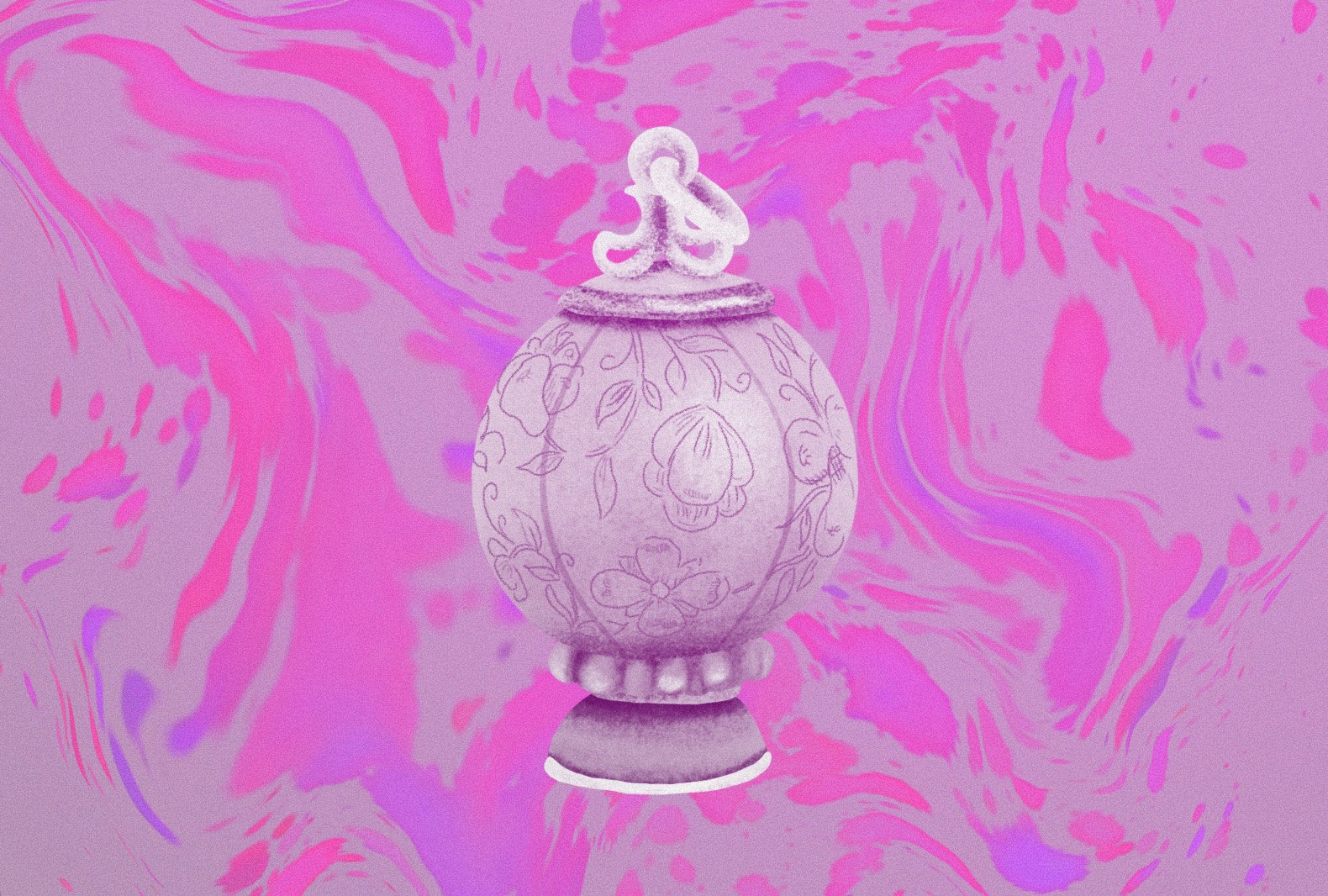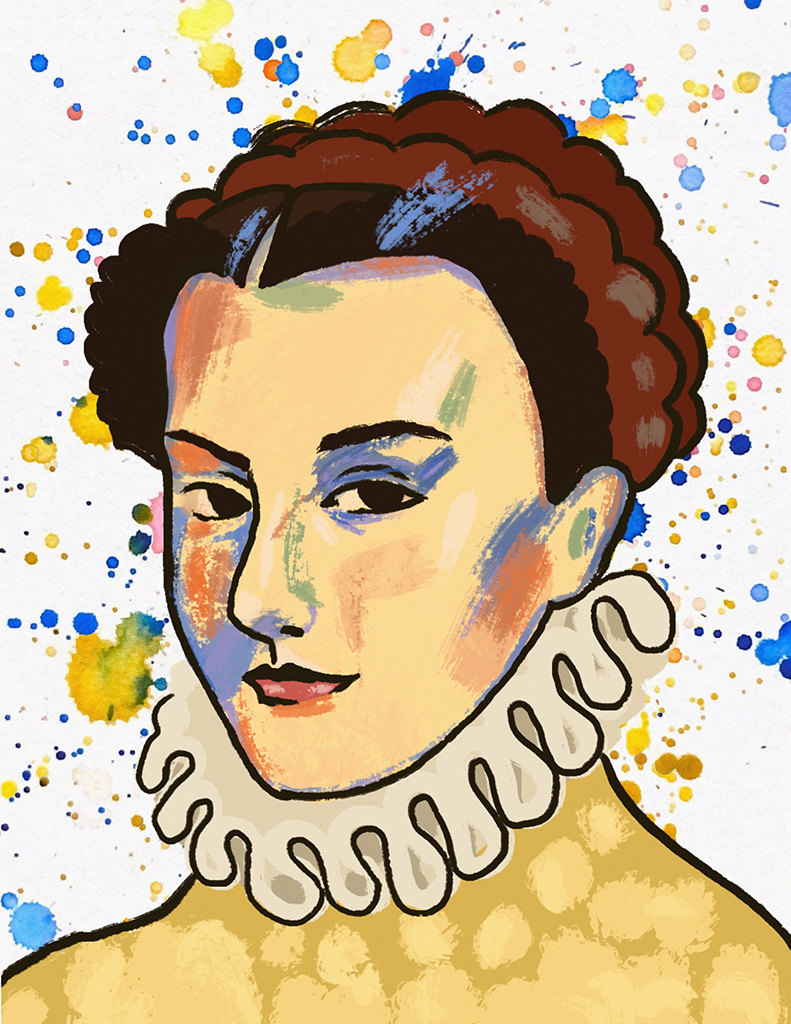
by Camilla Sarra. Cover image: Illustration by Margie Mitchem for I’M Firenze Digest.
Perhaps not everyone knows that one of Caterina de’ Medici fun facts is that she was an absolute rockstar. An advocate of women’s empowerment, an inventor, and an influencer, she has been a pioneer in her time. Curious to learn more about this incredible woman?
Caterina de’ Medici has always had a genuine interest in women’s history and their roles in politics. She can be considered a historical example of female empowerment: her journey touches on the theme of gender equality and the importance of ensuring equal opportunities for women in leadership positions, both in public and private sectors. She was a diplomatic figure, much like Angela Merkel or Hillary Clinton or Lady Diana, with a strong influence on the international political landscape.

Illustration by Margie Mitchem for I’M Firenze Digest.
First Caterina de’ Medici fun facts is about interests and fascinating personality
Caterina de’ Medici (Florence 1519 – Blois 1589) was an eccentric, unpredictable, and brilliant queen. She was originally from Florence but destined for France as she married Henry II in 1547. She had a multifaceted personality and diverse interests that made her famous, with many accomplishments in the fields of perfumery, cuisine, art, and fashion. However, it’s essential to note that Caterina, known as the “Queen Mother” for the three monarchs she bore, also stood out for her complex personality. Historical accounts depict her as an insensitive, extravagant, envious, and power-hungry woman.

Illustration by Margie Mitchem for I’M Firenze Digest.
On the art of perfumery, Caterina de’ Medici fun facts
Scented fragrances, widely used among Italian ladies, were introduced to the French court by Caterina de’ Medici. The star behind this innovation was her personal perfumer, Renato Bianco, also known as “René le Florentin” in France.
Caterina’s attention to perfume and fashion was evident when she arrived in Marseille with her entourage, captivating the local population with their grand elegance. The French were particularly intrigued by the precious metal balls that Caterina and her entourage wore around their necks and occasionally brought to their noses.
They were the so-called “pomanders,” or perfume pendants, which they would carry to spread pleasant fragrances. In addition, Caterina de’ Medici received an innovative pair of scented gloves from a renowned tanner named Gallimard from Grasse.
These gloves were extraordinary as they had a fragrance that could neutralise the foul smell that leather usually retains after artisanal tanning. The queen was delighted with this unusual gift and, being the trendsetter that she was, contributed to popularising the accessory: finely embroidered gloves emanating the sweetest effluvia soon became a status symbol among the most elegant women of the court.

On the introduction of underwear
In addition to perfumes, Caterina de’ Medici introduced various innovations in France when it came to fashion. Her elegant and refined style contributed to the popularity of Italian fashion and influenced the rest of Europe. Interestingly, the most famous innovation she brought to the fashion world was the use of pantaloons, which became a symbol of high social status among the nobility. Caterina introduced this undergarment after promoting a particular style of horseback riding that posed the risk of exposing too much for ladies. Thus, pantaloons, often referred to as “rear reins,” became a practical and sought-after garment, often beautifully decorated and adorned, serving as a means of flaunting one’s wealth.
On eating and table etiquette, the unexpected Caterina de’ Medici fun facts
As Queen of France, Caterina de’ Medici played a significant role in the development of the culinary arts. She not only expanded the range of dishes but also introduced the use of cutlery, which was already popular in Italy. The queen brought her Tuscan recipes to the French table, including dishes such as the so-called “salsa colla” (an ancestor of our béchamel sauce) or the “soupe d’oignons,” a simple and homely onion soup. These Tuscan dishes exported by Caterina have since become a part of French culture.
Additionally, the queen promoted hygiene and elegance at the table by introducing the use of forks. It was common to eat with hands in courts, with limited utensils available. Caterina’s forks, designed by the great sculptor Benvenuto Cellini, were a testament to her attention to both elegance and convenience.
This peculiar Florentine queen left a rather enigmatic impression on historians. Caterina de’ Medici practiced occultism and was drawn to esoteric sciences, which is closely related to the incredible superstition mentioned in historical sources. One such instance was during a feast held in her honour in Paris in 1549, where it was believed that the number of courses served had to be divisible by three, the perfect number, to satisfy Caterina’s superstition. As a result, to the amazement of those present, there were thirty-three roasts of deer, thirty-three hares, six pigs, sixty-six boiling hens, sixty-six pheasants, and so on.



